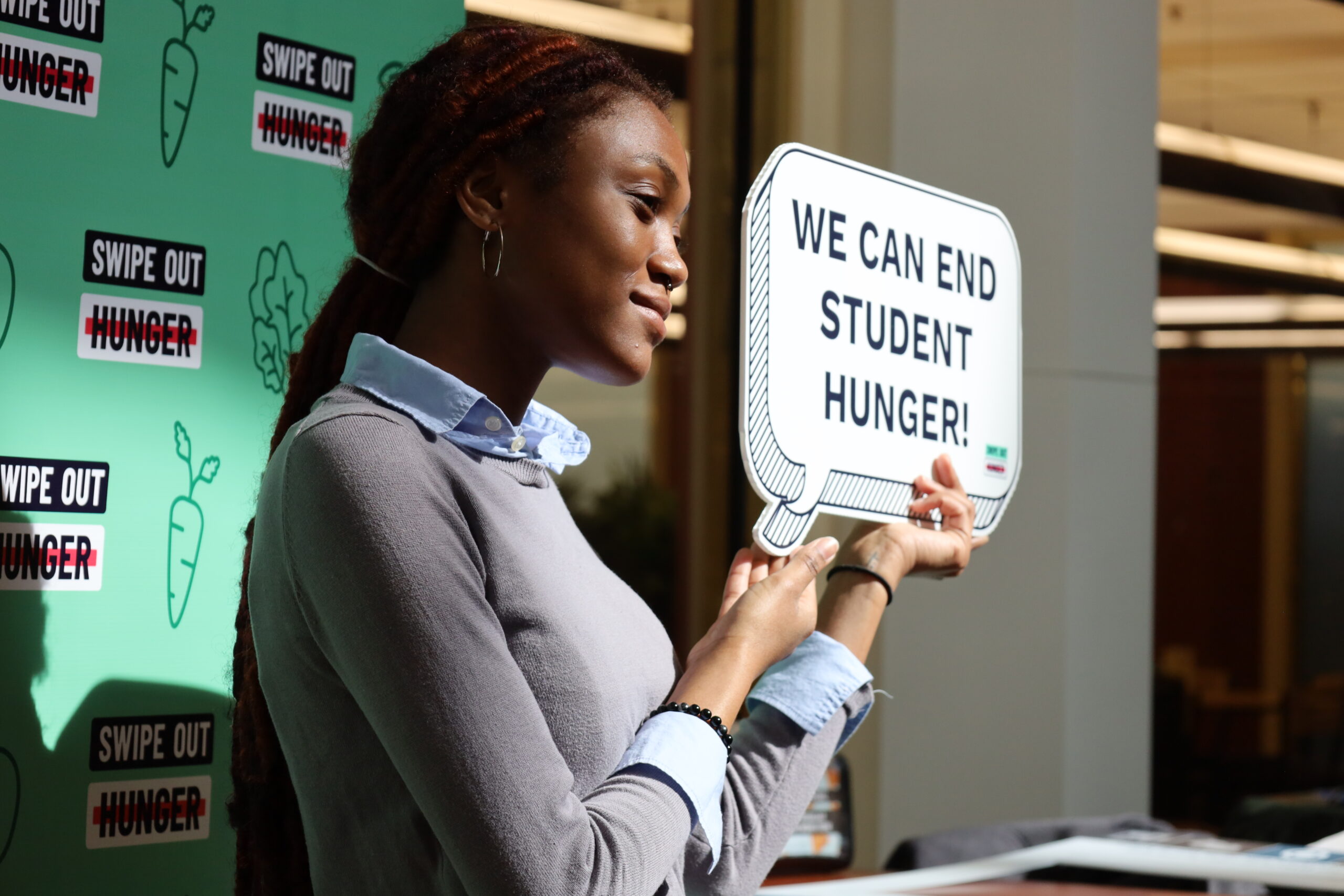
2025-2028 THEORY OF CHANGE & STRATEGIC PLAN
LETTER FROM OUR EXECUTIVE DIRECTOR & BOARD CHAIR
July 1, 2024
“I was able to not be afraid to spend on food and gas, and I was able to feed my little brother on days where my mom was not home. It gave me a sense of relief and belonging to my campus community, and my parents approved of me being a student and taking the time to study instead of going straight into the workforce.”
– A current college student about their campus food pantry and resources
We hear these stories everyday — stories of college students choosing between their education goals and their grocery bill. The realities that many students face is the increasingly high cost of a college education, economic uncertainty, drastic political shifts, and declining basic needs support systems. The average college student today looks very different from what we once knew: one in five are parenting, 80% are working in addition to going to school, and more students who identify as Black, Indigenous, and people of color are enrolling than ever before.
Swipe Out Hunger and the students we serve were also deeply affected by the pandemic. Overnight, housing and food costs soared, students moved into isolation and separated from any resources their colleges provided. Before the pandemic, there were an estimated 750 campuses with anti-hunger programming, and roughly 130 of those campuses were in our network. In the fall of 2022, after Swipe Out Hunger acquired another nonprofit the College and University Food Bank Alliance, the network swelled to over 450 campuses. The Swipe Out Hunger network is now at almost 800 campuses, all with varying anti-hunger programming available to students. These numbers required us to expand our support to additional resources and grantmaking, while also supplying us with the information we needed to be more effective advocates for students and campuses. We are growing to meet this immense need, and we now have the numbers and momentum to change legislation and services for millions of students across the country.
Over the course of this past year, Swipe Out Hunger began a deep reflection of our work, hosting information sessions with internal and external stakeholders. These conversations allowed us to test our current work and brainstorm where we could improve. We walked away with valuable information that validated our current programs and advocacy efforts and highlighted where we could enhance and expand our work. That information shaped the theory of change you’ll see in our new strategic plan.
The team’s excitement about our new initiatives grows daily. We are eager to continuously improve our program and advocacy work, adding a third mission-centric department called Community Engagement to build more localized relationships and knowledge-sharing. This department will also assist the current team in expanding our network of engaged organizations, students, administrators, and other passionate anti-hunger advocates. Our final pillar, Evolve the Narrative, paves the way for our advocacy and programs to continue their great efforts. Without the barrier of understanding the complex problem of college student hunger, we can build more successful solutions through impactful legislation and dedicated administrators.
At this moment we see an opportunity and hope you’ll join us as we build access, equity, and justice for students in higher education.
On behalf of our board of directors, leadership, and staff, we thank you for doing your part to end college student hunger and restore the promise of higher education.

Jaime Hansen
Executive Director

David Croom
Board Chair
THEORY OF CHANGE
Our Theory of Change describes how we’re making our mission and vision a reality. See a quick overview of our Theory of Change below, or check out the accompanying slide deck to dive deeper into our strategic plan.
View in new window View in new window
